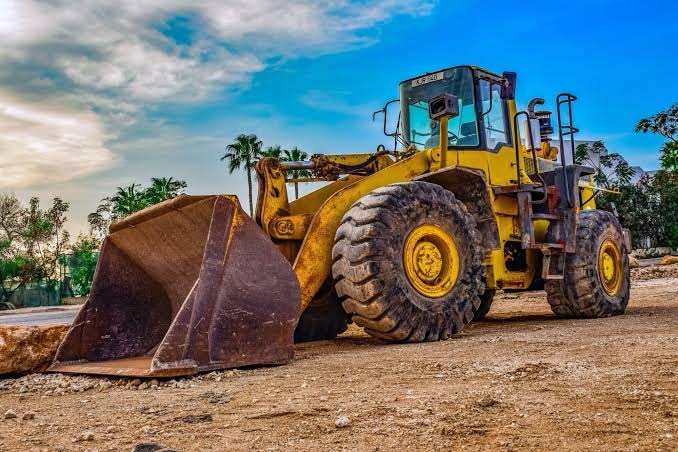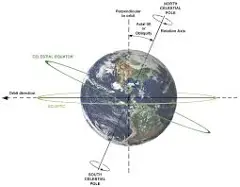FC Barcelona
How Earth’s Moving Pieces Shape Our World

How Earth’s Moving Pieces Shape Our WorldThe Earth is a dynamic and ever-changing planet, with a variety of moving pieces that work together to shape our world. From tectonic plates shifting beneath our feet to the powerful forces of earthquakes and volcanoes, these natural phenomena play a crucial role in shaping the landscape and environment around us. In this blog post, we will explore how Earth’s moving pieces impact our world and the interconnected systems that make up our planet.
Tectonic Plates
At Earth’s crust, gigantic rock slabs known as tectonic plates drift steadily, shaping our planet’s surface in profound ways. These colossal plates, which compose the lithosphere, are in constant motion, albeit at a pace that’s imperceptible on a human timescale. Their interactions are the driving force behind the Earth’s most dynamic geological events, from the birth of new mountain ranges to the depths of the ocean floor’s valleys.
As these plates shift, they can either converge, diverge, or slide past one another, each movement setting the stage for a range of natural phenomena. Convergent boundaries can thrust the Earth upwards to create towering mountain ranges or plunge it into the depths to form deep oceanic trenches. Divergent boundaries, meanwhile, foster the creation of new crust as magma surfaces, forming new land and underwater landscapes. The friction and collision of these plates are pivotal, not only in molding the Earth’s topography but also in catalyzing seismic and volcanic activity, thereby continuously reshaping the environment in which we live.
Earthquakes, Volcanoes, and Natural Disasters

Earthquakes and volcanoes, dramatic manifestations of Earth’s restless nature, stem from the relentless motion of tectonic plates. These geologic titans unleash energy along faults or at plate boundaries, leading to earthquakes that can devastate communities with their sheer power. Similarly, volcanic eruptions occur where Earth’s crust is weakened, allowing molten rock to escape with explosive force. These phenomena are not only awe-inspiring but also bear the potential for severe destruction, including the obliteration of buildings, the initiation of tsunamis, and the alteration of landscapes. Their occurrence is a stark reminder of the dynamic planet we inhabit, underscoring the importance of monitoring and understanding the forces at play beneath Earth’s surface to mitigate the risks they pose to our world.
Atmosphere
Volcanic activity, propelled by the relentless motion of tectonic plates, introduces significant quantities of ash and gases into the Earth’s atmosphere. These emissions, particularly sulfur dioxide, can lead to a notable cooling effect on the planet. By reflecting sunlight away from the Earth, these particles and gases temporarily lower surface temperatures, influencing global climate patterns. Beyond volcanic eruptions, the rearrangement of the Earth’s crust through plate tectonics affects atmospheric conditions in more subtle ways. The emergence of mountain ranges alters wind currents, while the shifting of landmasses has the potential to modify ocean currents and, consequently, climate systems. These processes underscore the intricate link between the geophysical movements of the Earth and the complex dynamics of our atmosphere. Such interactions are vital in understanding the broader implications of tectonic activities on weather patterns and climate change, highlighting the interconnectedness of Earth’s systems.
Oceans
The ocean, or “The Blue Planet”, is one of the most significant moving pieces on Earth. It has shaped the world in countless ways, from regulating the planet’s climate and weather patterns to providing a rich habitat for millions of species. Oceans cover more than 70% of the Earth’s surface, and they are home to an incredible variety of marine life. From the smallest plankton to the largest whales, the ocean supports an astounding amount of biodiversity. The ocean also plays a crucial role in the water cycle, evaporating water into the atmosphere and returning it to the Earth as rain.
Biosphere
The biosphere is an integral part of the Earth’s system. It encompasses all of the living organisms on the planet, from the smallest microbes to the largest mammals, and it is shaped by the interactions between these organisms and their environment. The biosphere is a dynamic and ever-changing ecosystem, and it plays a crucial role in shaping the planet’s climate, atmosphere, and geology. The biosphere is also deeply interconnected with the hydrosphere, which includes all of the Earth’s water in its liquid, solid, and gaseous forms.
FAQS
How do tectonics shape our world?
Tectonics, the movement of Earth’s giant rock plates, is the architect of our planet’s ever-changing landscape. Here’s how:
- Mountain Building: Collisions between plates push up enormous mountain ranges like the Himalayas and the Andes.
- Ocean Trenches and Volcanic Activity: Plates diving under others (subduction) create deep ocean trenches and trigger volcanic eruptions along these margins.
- Continent Formation and Breakup: Over millions of years, plates drifting apart form new oceans (like the Atlantic) and colliding plates create supercontinents (like Pangaea) that eventually break apart again.
- Earthquakes and Faults: Friction between grinding plates causes earthquakes, and plate boundaries often form noticeable fault lines on Earth’s surface.
How does the movement of the Earth affect the Earth’s appearance?
Earth’s ever-shifting plates are responsible for many of its dramatic features:
- Majestic Mountains: As mentioned earlier, collisions and subduction create towering mountain ranges that define continents.
- Deep Ocean Trenches: The subduction process forms the deepest points on Earth’s surface, like the Mariana Trench.
- Volcanic Archipelagos: Subduction zones can also give rise to volcanic island chains.
- Continental Drift: The movement of continents over vast timescales has shaped our current continents and ocean basins.
How do Earth’s plate movements affect humans?
Plate tectonics significantly impacts human lives:
- Natural Disasters: Earthquakes, volcanic eruptions, and tsunamis often occur along plate boundaries, posing threats to life and property.
- Geothermal Energy: The heat generated by plate movement can be harnessed for geothermal energy production.
- Resource Formation: Mountain building can expose valuable mineral deposits, while subduction zones can concentrate certain resources like copper.
- Shaping Human History: Continental drift may have influenced the migration patterns and distribution of early humans.
What are the moving pieces of the Earth?
The moving pieces of our planet are the tectonic plates. These giant slabs of solid rock (the crust and uppermost mantle) form Earth’s outermost layer and float on the hot, molten rock of the mantle below. There are major and minor plates, constantly in motion due to convection currents in the mantle.
What is the description of the shape of the Earth?
Earth is not a perfect sphere. It’s an oblate spheroid, bulging slightly at the equator due to the centrifugal force caused by its rotation. Tectonic plate movement also contributes to subtle variations in Earth’s shape.
Conclusion
In conclusion, the various moving pieces of Earth – the lithosphere, atmosphere, hydrosphere, and biosphere – shape our world in profound and complex ways. From tectonic plates that drive geological processes to the ocean that regulates climate and supports life, these systems are in constant motion and interaction with one another. Understanding how these systems function and influence each other is essential to managing our impact on the planet and ensuring a sustainable future for all. As we look to the future, it is clear that our actions can have significant consequences for our planet and ourselves.







